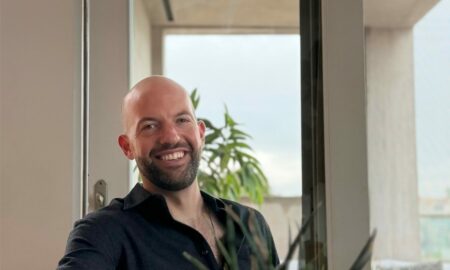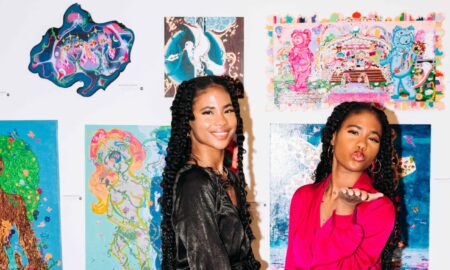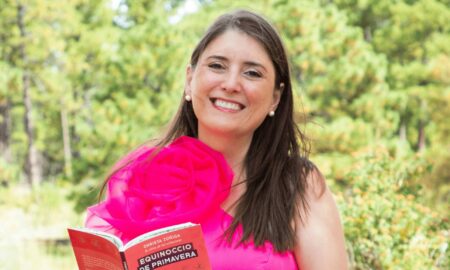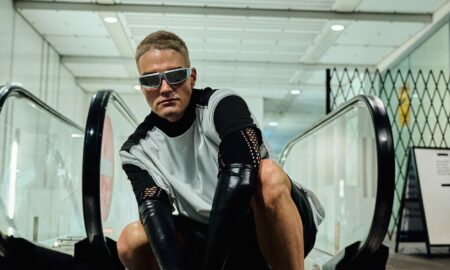
Today we’d like to introduce you to Kuniko Vroman.
Kuniko, can you briefly walk us through your story – how you started and how you got to where you are today.
It all started with a little boy with Autism Spectrum Disorder (ASD) and play-doh horses…
I have worked with individuals ages two to eighteen with ASD both as a behavioral therapist and case manager. One of my participants had a very difficult time using expressive verbal communication (EVC; speaking words) but I found that if I brought out play-doh he would ask for me to make a horse. Over time, the simple request of “Kuniko make horse please” evolved to more complex requests, including a specific number of something, riders, tack, and actions. He was asking for two horses, or a brown saddle, black reins, and a yellow cowboy (or a cowgirl, or both) with a red hat. When asked how the horse felt he might say, “Horse is thirsty” or “hungry” and then they would pretend to have the horse drink and eat. He would ask for the horse to eat and drink certain things (who knew horses liked cereal with milk?!?). He had the horses walk and then run slow and fast, saying “neigh” and snorting the whole time. When they were done and tired, they would say ‘goodnight’ and go to sleep and snore. I was thrilled with the amount, variety, spontaneity and quality of EVC around these little play-doh equines and wondered what would happen if he met an actual horse.
I asked around and found a horse whose human was open to a meeting. I didn’t know what would happen but felt that I needed to try. I was excited and a little bit nervous!
The meeting was absolutely magical; the little boy spontaneously and independently used EVC to point out horses running across a hill and later to tell me, “Good time!” and “Good job!” The most remarkable moment came later at dinner when the little boy was stimming (behavior consisting of repetitive actions or movements) by bouncing in his seat and flapping his hands. Historically when he stimmed I and his family did not know what was happening: if he was sad, happy, in pain, excited- but that night he said, “See horse run”. In a moment when using EVC/words would probably be the most difficult, he was able to share what he was thinking about!
From this moment on, I was determined to find a way for him to work with horses and to learn as much about them and equine assisted therapy.
I volunteered for two years at a Professional Association of Therapeutic Horsemanship International (PATH Intl.) Premier Accredited Riding Center where I helped with sessions for veterans, individuals who have special needs or were in recovery from addiction. I also volunteered for an organization that provides equine assisted psychotherapy (EAP) for one year. I studied and trained and became a Certified Equine Interaction Professional as an Equine Interaction Facilitator and Educator (CEIP-EIF, CEIP-ED) from the Certification Board for Equine Interaction Professionals (CBEIP). Throughout all of this, I wondered how I could further use my specific skill set, experience, and love for animals in a way to be of service.
Though I loved my work as a behavioral therapist and case manager, I didn’t like that I was limited to interactions as allowed by the companies I worked for. The companies only allowed services that checked all the boxes mandated by insurance companies and activities that didn’t disrupt the companies’ bottom lines. I felt that I should be working for the families’ best interests and not the companies’- and if a space didn’t exist that was open to healing, growth and learning in the many different forms it could take, then the answer was to create one. With a lot of support, encouragement, hard work and love I started Helping Hoof.
About me personally – I was born in a small town in Southern Oregon. My father left us when I was three and I was raised by my mother, an immigrant from Japan. As far as I knew, my brother and sister and I were the only Asians in the town. We would have to drive a ways to see other families and they were always as excited to see us as we were them. My mother raised us on basically nothing ($80/month/child and food stamps). We grew a lot of our food and relied on help from others to get by. I was teased and bullied in grade school and as a result have always been very protective of the vulnerable. Even in grade school while I was the victim of racism, I would befriend those of my classmates with special needs and keep the other kids from being mean to them too. I couldn’t stand to watch them be made fun of or be ignored. On the flip side, my backyard was a forest and nature was all around. I would spend all of my time watching birds build a nest, playing in trees or the creek. That was amazing.
At 12, my mother moved us to San Jose which was quite an adjustment! I remember my sister and I held hands to cross the expressway to go to the store. It was bigger than our freeway. At my middle school orientation, I came home in tears telling my mother we would have to throw away my best and only coat because it was blue and people would think I was in a gang. It was powder blue mind you! I kept track of the sirens I heard almost daily because I rarely heard them where I grew up. So there was all of this that was new and scary, and, for the first time in my life, I didn’t stand out! No one asked me where I was from or complimented my English skills! No one did a double take as I walked down the street. It was a breath of fresh air! I eventually moved to the East Bay for a few years and then, about four and a half years ago, to Los Angeles.
Great, so let’s dig a little deeper into the story – has it been an easy path overall and if not, what were the challenges you’ve had to overcome?
Horses are expensive! Throughout all of this, gaining consistent, reliable access to horses has been the most difficult part. If you don’t have money, it requires making and maintaining relationships to gain access to these wonderful therapeutic partners. In other parts of the country gaining access to horses might be more simple and economically diversified, but in Los Angeles, it means breaking into an often insular world. The horses themselves never judge a person based on anything but their willingness to try and be their most authentic self, the deepest, most true part of you. They don’t care who you know, what you are wearing, how ‘educated’ you are, how you self-identify, or your socioeconomic status- but the humans that care for them, whether it be consciously or not, often do. On my behavioral therapist salary I could barely pay my rent, let alone have money to learn about and be around horses. My solution was to spend essentially every free moment I had volunteering at therapeutic centers or meeting people and their horses.
This route was tricky at times too though. If you cannot afford to keep your own horse then you have to spend a lot of time with so-called ‘horse people’, who can be very opinionated and protective of their horses. In a way though, having to meet with and work for as many ‘horse people’ as possible really helped me educate myself about horse behavior and care. I learned multiple ways to do things and the best way to manage all the risks involved with working with horses. I also learned that a horse’s willingness to connect and communicate with me could be shaped by the humans that control their lives, that there may have been an attempt to condition them to have certain responses, but a lot of the time I was still able to establish a connection regardless of the humans around them.
Please tell us about Helping Hoof.
Helping Hoof is a non-profit 501(c)(3) organization providing equine assisted therapeutic activities and opportunities for growth and learning for those with developmental, physical, emotional and mental challenges.
The heart and soul of Helping Hoof is a loving and respectful relationship between humans and equines (horses and donkeys). You don’t need to know about horses and donkeys to experience their healing potential because we facilitate interactions for you! We have a variety of programs to choose from all centered around human/horse (or donkey!) interaction.
Our programs are Horsing Around (Behavioral Intervention), Leg Up (Adjunct and Companion Activities to Therapy), Horse Power (Personal Development) and Homework Horse: Equine Assisted Tutoring.
Horsing Around (Behavioral Intervention) are sessions tailored to address the behavioral concerns of our participants and their families. I have worked extensively with children with Autism Spectrum Disorder and created programs for problematic behaviors, including escape, attention, object and sensory seeking behaviors as well as perseverative behaviors. I also worked with participants on socially significant behaviors like expressive verbal communication, eye contact and peer interaction, and self-care and daily living skills.
Leg Up (Adjunct and Companion Activities to Therapy) is for folks who may already be seeing a therapist that they like but are looking for a safe space outside of the office explore things further. Helping Hoof offers adjunct/companion sessions to enrich the therapeutic work you are already engaged in. Problem solving and behavioral changes that you talk about with your therapist can be enhanced through experiential learning with an equine partner.
Horse Power (Personal Development) is for those looking for support in setting and achieving goals, overcoming obstacles or making changes in their lives. Helping Hoof sets you up with an equine partner to help you focus, provide direction, challenge you, support you, and motivate you to realize your potential and create the life that you envision for yourself!
Homework Horse: Equine Assisted Tutoring works to mitigate things like low self-esteem and anxiety that can make learning difficult, especially for a child. Horses do not judge academic ability and often those emotional barriers to academic success are lessened or disappear completely around a horse friend. Homework Horse is tutoring for grades K-5 with a human tutor and an equine study buddy. Your child will be partnered with an equine and a human facilitator will be there to provide gentle guidance during a hand-tailored tutoring program.
All sessions can be mounted (on horseback) or on the ground (activities that do not involve riding or sitting on the horse). Session type is determined after an initial meeting/assessment in which safety, comfort level and what type of session would be most beneficial are considered.
I offer reduced cost sessions to participants who receive SNAP, piloted free sessions for participants from local housing projects and am hoping someday to become a vendor with local regional centers so I can offer services for free to more families! I am trying to find a way to make the org sustainable while helping those who might not have the economic means to participate.
I am moved every session, the horses manage to get at breakthroughs that just weren’t happening without them. I have seen a boy with Autism, who doesn’t call his mother or father by name ask to go to a horse by name, “go Suede”, a young woman with PTSD make a connection about trauma years ago and about why she cannot breathe easily today, another young woman, who was recently unhoused, learn how to overcome fear and ask for help in doing so. Time after time, and in every session, the horses allow us to see ourselves in ways we just haven’t been able to do so on our own.
I feel like I am good as a facilitator. Besides all of my training, I have recently been trying to spend time with wild horses. Watching them interact with each other and trying to form my own relationship with them has been so instructive! Horses are prey animals and as such, are really, really good at evaluating if someone approaching is a threat. Does this predator want to eat me? Are they acting like they are not dangerous when in fact they really are? Horses decide if they are open to having a relationship with you based on how congruent you are. Does your outward approach match your internal feelings? If you are afraid of horses and try to approach one acting like you are not scared, you may have fooled yourself, but you haven’t fooled the horse. They probably won’t want to have an interaction with you. If, however, you approach the horse honestly, chances are they will be cautious, but more willing to try.
Horses will often mirror your feelings and emotions back to you. If you take a deep breath around a horse, chances are they will do the same thing. Since they are so good at seeing your true inner state, when a horse holds up a mirror by reflecting your inner self back to you, they often reveal parts of yourself that you, all of us have had to hide. We all wear masks to get through tough situations and play the roles we must to exist in society. When I ask participants to try an activity like leading a horse with a rope, how they approach the task, figuring it out and its challenges; often their own behaviors are reflected back at them and patterns that they couldn’t see they were stuck in become apparent or feelings or traumas they have buried deep come to the surface.
Because of my work with individuals on the Autism Spectrum I am well versed in how sensory regulation can impact a person’s ability to perform certain socially significant behaviors. If you don’t feel comfortable in your body, you will probably have a hard time interacting with others in a meaningful way. Being around horses is great for sensory regulation. They have slower heart rates and breathe more slowly than us. We often start to sync up to those rhythms and it can have a calming effect on us. If we ride a horse, the movement our bodies experience can be like that of walking, without having to walk. For participants who need more sensory feedback, this means they can get it without having to expend their own resources. For participants who cannot walk, the activity engages the core as though they were. And, for participants with high muscle tone or palsy, they heat from the horse’s body and motion can help soften and relax muscles.
Horses communicate by and large non-verbally. Some speculate that they have millions or even billions more mirror neurons than humans do and that because of this, they are extremely effective at non-verbal communication. When a participant who may have a hard time with expressive verbal communication, who has benefited from sensory regulation also gets to have a conversation with another living thing without the pressure of using ‘words’ the result can be a desire to have that same level of communication with others in their life. Like, I really like communicating with my horse friend, now that I am feeling good in my body and I don’t need to focus on getting my sensory needs met, let me see if I can communicate with my parents or friends.
There are so many reasons horses make such amazing therapeutic partners and I feel like my knowledge of these things make me an effective facilitator. I truly believe you will always get something out of time spent with a horse, but that I can guide you to powerful experiences that otherwise might have gone unexplored.
Do you look back particularly fondly on any memories from childhood?
I don’t really have one favorite memory, but most of the happiest moments in my childhood were spent outside connecting with the elements, plants and, of course, animals. Time gets super slippery and it’s great to be on bird time, as you watch them building a nest or tree time watching the pine nuts drift down on their tiny wings from opening pine cones. Once a squirrel dragged a huge sugar pine cone on our deck in Oregon, right outside the kitchen window. I sat inside at the table and watched them pull the pine cone apart and happily eat the seeds. When they were finished, they pulled the sticky pitch from each finger. It looked like someone trying to pull off gloves one finger at a time with their teeth. It was hilarious and adorable!
Contact Info:
- Website: www.helpinghoof.org
- Phone: 323-303-7471
- Email: [email protected]









Suggest a story: VoyageLA is built on recommendations from the community; it’s how we uncover hidden gems, so if you or someone you know deserves recognition please let us know here.




















